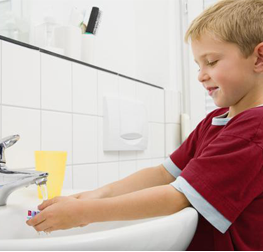Services
What is ABA?

According to the Behavior Analyst Certification Board (BACB), Applied Behavior Analysis (ABA) is "a systematic approach for influencing socially important behavior through the identification of reliably related environmental variables and the production of behavior change techniques that make use of those findings."
In a seminal article on ABA, Baer, Wolf, and Risley (1968) defined ABA as having the following seven characteristics:
That is, in ABA we:
1. Look at a socially important behavior, like a child's inappropriate behavior such as aggression (applied)
2. Use behavioral measurement such as direct observation of the inappropriate behavior rather than maybe asking someone questions about the child's inappropriate behavior or studying the child's thoughts about the aggression which is not directly observable (behavioral)
3. Look directly at understanding what variables in the environment might change the person's behavior. So, if we want to know more about a child's aggression, we look at things in the environment that happen before and after the behavior and that might be controlling the behavior (e.g., before a child hits someone that person asks them to do something, then the child hits the person, then the person tells the child "oh, don't be upset, I won't make you do it right now. After understanding the variables at play, a function-based intervention is developed. Ongoing data are collected in order to demonstrate that behavior change is a direct result of those programmed interventions (analytic)
4. Write out a protocol with operational definitions and clear procedures that can be replicated across interventionists (technological)
5. Implement procedures that are based on ABA principles and that have been studied across species (conceptually systematic)
6. Use procedures that improve the target behavior to a level that is meaningful for families, teachers, and other caregivers (effective)
7. Program for the change to continue over time - with different materials and people, in different locations and with other behaviors (generality)